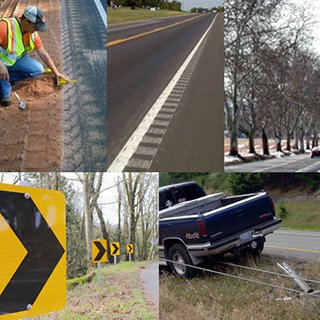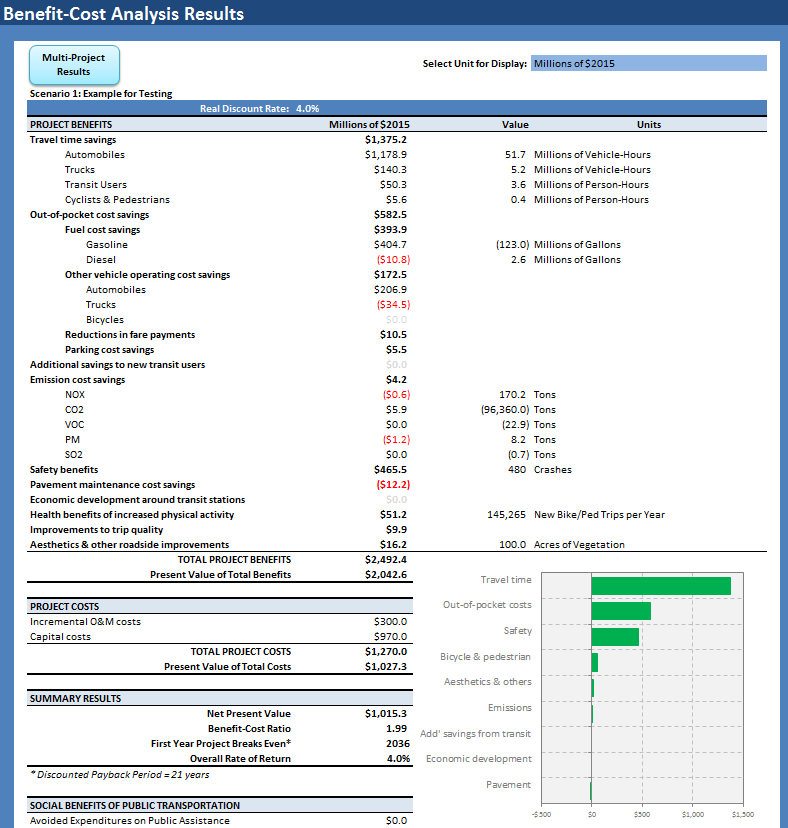The Montana practice is discussed after the following introduction about Tribal Government Involvement in the Strategic Highway Safety Plan process.
Other states in this SHSP/Tribal Government Noteworthy Practices series: ND, SD, WA
Involving Tribal Governments in the Strategic Highway Safety Plan Update Process - Approaches and Benefits
As States move toward achieving zero deaths on their roadways, the impact of motor vehicle crashes in tribal communities and on tribal roads cannot be overlooked. American Indian and Alaska Native (AI/AN) populations experience higher rates of fatalities associated with transportation than does the population as a whole. Crashes are also the leading cause of unintentional death for AI/AN ages 1-44.
Legislation requires that the SHSP is developed in consultation with major Federal, State, tribal, and local safety stakeholders (23 U.S.C.148 (a)(12)(A)). SHSPs must also consider safety needs of, and high-fatality segments of, all public roads, including non-State-owned public roads and roads on tribal land (23 U.S.C.148 (a)(12) (D)).
States and tribal governments are working together in an effort to reduce roadway injuries and fatalities in tribal communities. This includes collaborating during the State Strategic Highway Safety Plan (SHSP) process, an effort that brings together a diverse group of stakeholders to identify critical roadway safety challenges and establish potential solutions. Tribes are also developing Strategic Transportation Safety Plans of their own, which may allow access to additional resources such as the Tribal Transportation Program Safety Fund.
These noteworthy practices highlight the activities of four States and tribal communities to collaborate during and after the SHSP process. They contain several recurring themes:
- Establishing a government-to-government relationship between State offices and tribal governments is very effective because it establishes respectful lines of communication and agreed-upon approaches that facilitates discussion on roadway safety issues.
- Tribal involvement in the SHSP process insures tribal concerns and strategies are addressed in the SHSP.
- Tribal safety summits are an effective platform for information-sharing among tribes on roadway safety issues and often strengthen inter-tribal relationships.
- An established network for communicating between tribes and State agencies leads to better project coordination and delivery, lower project costs, stronger relationships, and better information sharing.
Montana
Background
The Montana Department of Transportation (MDT) began developing its Comprehensive Highway Safety Plan (CHSP) in 2006, in response to Federal surface transportation funding legislation. In developing the CHSP, it became clear from crash analyses that fatalities and serious injuries among Native Americans were disproportionately represented in Statewide fatal and serious injury crashes.
Over the past decade, Montana has also developed and adopted its long-term Vision Zero goal of eliminating deaths and injuries on its State highways. MDT's outreach to tribes concurrently grew over that time into a mutually beneficial government-to-government effort that includes education, planning, and technical support.
Evolving Tribal Involvement in Montana's Comprehensive Highway Safety Plan
Native Americans comprise 6.2 percent of Montana's population but make up about 17 percent of total motor vehicle fatalities per year. MDT is committed to consistently working with tribal planners and engineers, law enforcement, health service professionals, and other tribal representatives. These collaborations help identify strategies that can reduce fatalities and serious injuries on tribal roads, and contribute to Montana's Vision Zero goal.
The 2005 Montana Tribal Safety Conscious Planning Forum kicked off MDT's concerted collaboration on road safety with the seven land-based tribes in Montana. This forum brought together tribal leaders, the Governor of Montana, and the MDT director. This government-to-government, high-level communication was critical in achieving the forum's objective of encouraging tribes in Montana to participate in developing and updating the CHSP.
Since the forum convened, MDT's relationship with tribes has evolved to include regular communication on transportation safety issues between tribal safety representatives and MDT program managers. In addition to tribal participation in statewide annual meetings, MDT has two full-time staff who focus on tribal relations.
The cultural liaison in the State Highway Traffic Safety Section is funded by the National Highway Traffic Safety Administration. This liaison manages the Safe on All Roads (SOAR) program for traffic safety education that supports a SOAR coordinator on each reservation. These individual SOAR coordinators create and provide culture-specific messaging focused on safety awareness, education, and consequences of impaired driving, lack of occupant protection, and other risky driver behavior. MDT encourages each tribe to assign their own SOAR coordinator to help develop messages aimed at changing behavior, such as lack of seatbelt or car seat use. The SOAR coordinator positions were recommended in the CHSP.
The CHSP safety planner provides technical assistance, participating in development of tribal-led safety plans, quarterly meetings, and road safety audits. Starting in 2012, the Bureau of Indian Affairs Rocky Mountain Region Road Safety Audit Pilot Program conducted training and several road safety audits across the seven reservations. The pilot program used FHWA's Road Safety Audit Toolkit for Federal Land Management Agencies and Tribal Governments for guidance. Road safety audit programs have been included in individual tribal transportation safety plans. The CHSP safety planner also maintains relationships by proactively reaching out to tribes on a regular basis. Regular communication from these liaisons is key to maintaining tribal involvement in the CHSP, which was updated in 2015.
Montana's CHSP Update
Leading up to the CHSP update in 2014, MDT and tribal representatives collaborated and conducted four annual Tribal Transportation Safety Summits. Coordination involved providing technical support and other resources, such as venues. These summits were hosted by tribes in Montana, with rotating sponsorship each year to encourage tribal ownership over sharing road safety best practices.
Communication over years—not just when it's time to update the CHSP—leads to nuanced input for the CHSP, to strategies that have a chance of being implemented, and to reducing fatalities and serious injuries on tribal roads.
Many CHSP strategies were a result of the summit process. Others came out of the transportation safety plans each tribe developed, as required as part of FHWA Federal Lands Tribal Transportation Program beginning fiscal federal year 2013. In those plans, tribes use their own fatal and serious injury data and MDT fatality data to identify critical safety issues. While tribal safety plans tend to be more specific than the higher-level strategies in the CHSP, many tribal strategies—whether addressing impaired driving, occupant protection, lane departures, or other issues—are consistent with the emphasis areas in the CHSP. In addition, Tribal planners shared quarterly updates with MDT staff to identify opportunities for tribal safety plan development strategies to consider SOAR efforts and the CHSP update.
Tribes are now so well integrated into Montana's safety stakeholder group that separate tribal summits are no longer necessary. All seven tribes have been actively involved in the statewide annual Transportation Safety Meeting and tribal partners are also represented on CHSP committees.
Montana's 2015 CHSP update also reflects the integration of tribal issues. The CHSP update process identified several areas of overlap and determined it would be better to have fewer emphasis areas. The update no longer has 12 individual emphasis areas or a specific CHSP Native American emphasis area. Rather, tribal issues and strategies are found throughout the emphasis areas, and the emphasis areas in the CHSP are safety concerns for all Montanans.
Key Challenges
Getting tribal government leaders to discuss transportation safety was initially challenging. MDT brought those critical partners to the table by having MDT leadership connect with tribal leadership, and also offering financial assistance to cover costs of attending meetings, which underscored the importance of tribes' attendance.
Data continues to be the major challenge in Montana and other States engaging in proactive tribal outreach. Tribal traffic incident records tend to be incomplete, although fatality data is reliable because the Montana Highway Patrol responds to all fatalities on all public roads in Montana. One tribe has adopted all the State's traffic codes and consistently provides MDT with crash data. Other tribes have few traffic codes and do not consistently provide data to MDT.
Tribes in Montana are concerned about confidentiality issues when it comes to sharing data. There is also frequent turnover among tribal leadership, making it challenging for MDT to form lasting partnerships. MDT encourages better crash data by building trust with tribal representatives through consistent communication.
Benefits to Tribal Participation in the CHSP
- Brings all Montanans closer to a cohesive goal of on Montana's roads: Vision Zero - zero fatalities, zero serious injuries.
- Tribal issues and strategies are integrated into the CHSP emphasis areas.
- Realizing a downward trend in Native American fatalities.
- Participation from tribal safety representatives provides an opportunity to share best behavioral and infrastructure safety practices, and identify hurdles with other safety stakeholders.
- Helps builds trust among state agencies, tribal governments, and other safety stakeholders.
See these other SHSP/Tribal Involvement Noteworthy Practices:
Contact
Pam Langve-Davis
Statewide and Urban Planning
CHSP Coordinator/Safety Planner
Montana Department of Transportation
(406) 444-7646
PLangveDavis@mt.gov




